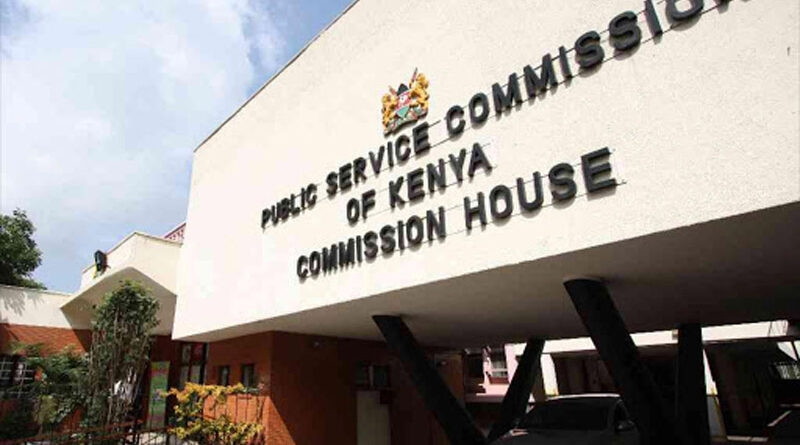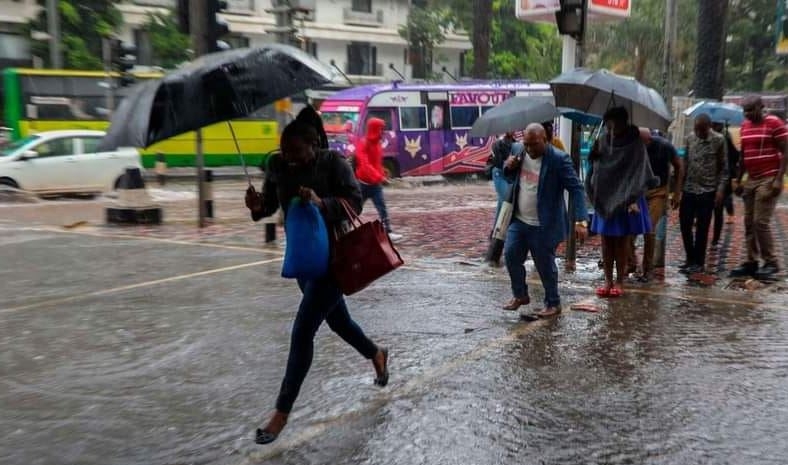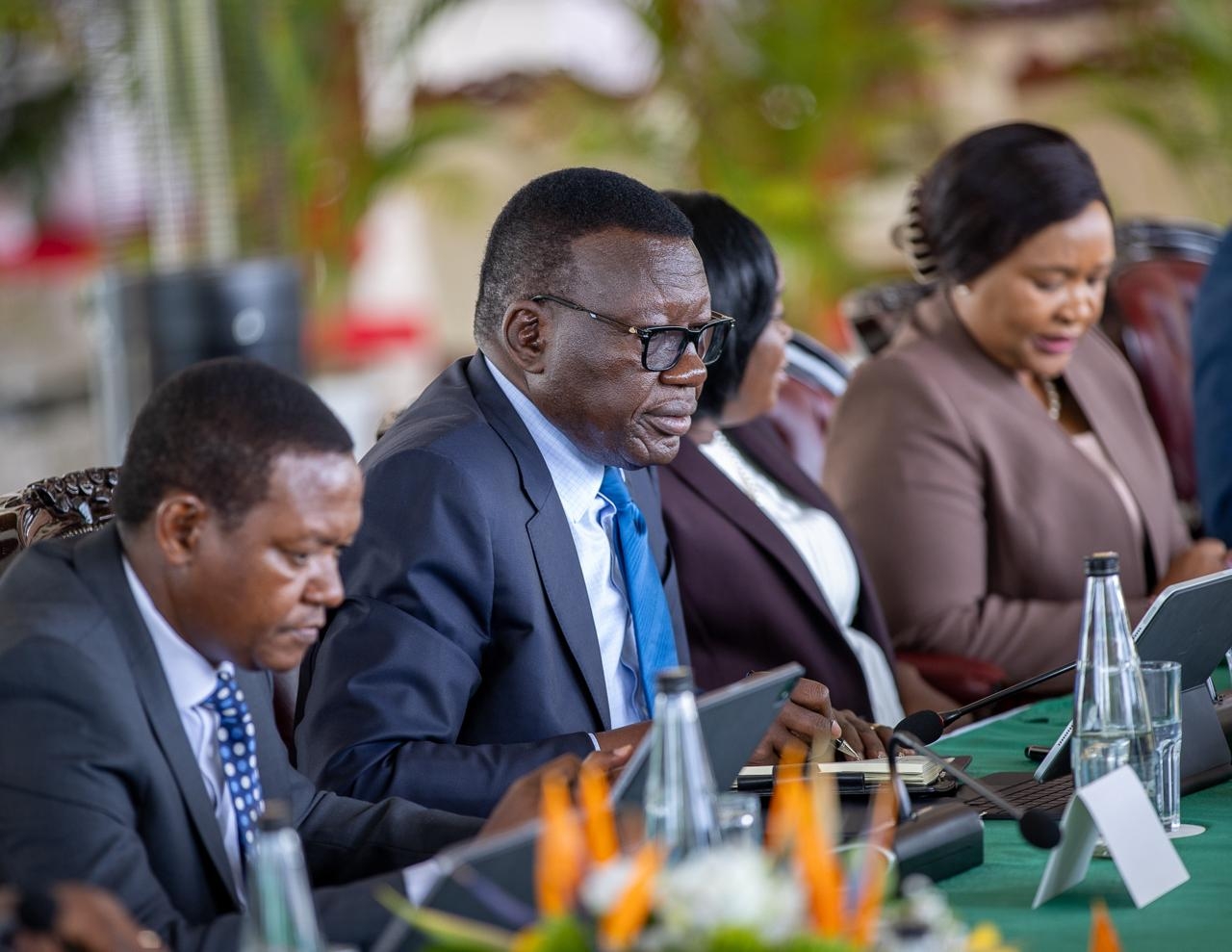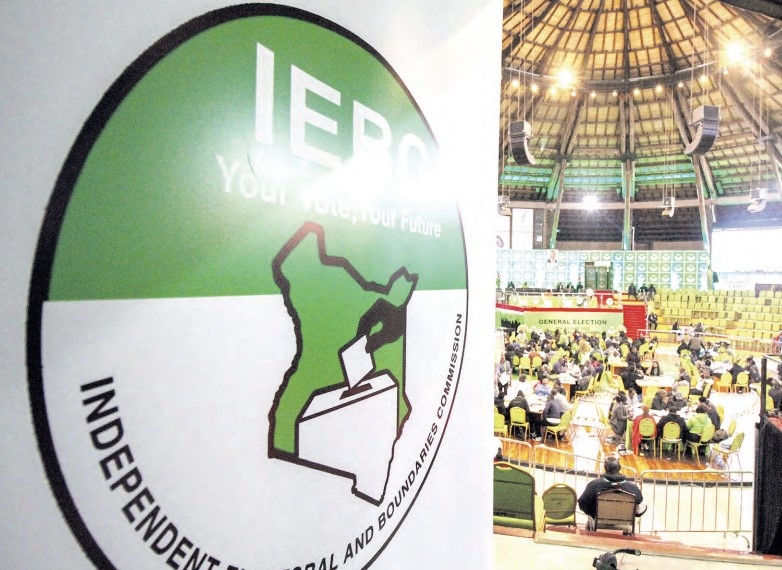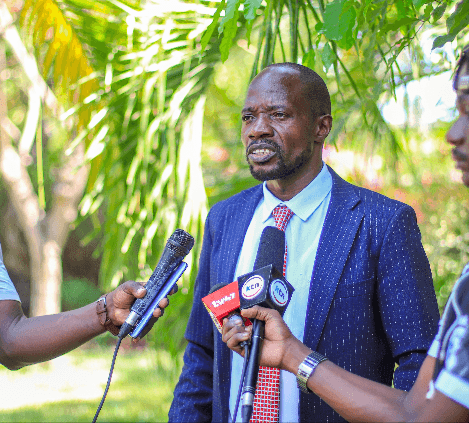As you approach the gate to this well-secured sanctuary, a chorus of sounds emanating from the thick bushes rents the air.
From high-pitched pant-hoots to soft rumbles, they make their presence felt from a distance.
It's almost 12pm. We are told it is approaching lunch time and perhaps they are communicating, alerting one another to come out of the thicket.
Welcome to Ol Pejeta Chimpanzee sanctuary, the only place in Kenya where you get the rarest opportunity to see these endangered primates.
The sanctuary, currently home to 29 alien chimpanzees, is tucked inside the lush, 90,000-acre Ol Pejeta Conservancy in Laikipia county.
It is located northeast of Nairobi on the equator west of Nanyuki, between the foothills of the Aberdares and Mount Kenya.
You can access it by road, which is a four-hour drive from Nairobi city, or a 45-minute flight.
The sanctuary was established 30 years ago and has been the home to these primates, who were rescued from countries including Burundi, Rwanda and Congo.
In fact, it was opened after a rescue centre in Burundi was closed due to the civil war outbreak in 1993.
This sanctuary has, however, just been reopened to the public three months ago, a three-year closure due to the outbreak of Covid-19.
"Chimps are susceptible to human diseases," Stephen Mukundi, the caregiver and the sanctuary’s supervisor, told us.
But, even with the exposure rate in the country among humans having dropped since its outbreak in 2020, management is not taking chances.
A signboard on the right side of the entrance greets you, proclaiming: 'Protect the chimps from Covid-19'.
'Please wear your mask at all times,' another one on the left side reads.
'CLOSEST HUMAN RELATIVES'
Mukundi says chimpanzees are the “closest living relatives of humans” and share nearly the same DNA: 98.6 per cent.
In fact, one of the chimps here named Judy has a walking disability after allegedly missing polio vaccination from where she was rescued from.
Before you are allowed in, the caregivers in charge must ensure that all the health measures are fully adhered to.
"Give us some minutes before we let you in," Mukundi said as he signals another worker to bring the face masks.
Visitors here can witness firsthand the daily routines of these primates, from morning feedings to the evening return to their secure night quarters.
“Msikuwe na haraka. Hata saa yao ya lunch inakaribia, ndiyo muwaone vizuri,” Mukundi jokingly told us.
After 10 minutes or so, we are supplied with the face masks and ushered in.
To help in identification purposes, each of them has been given a name, which tells a unique story of rescue and rehabilitation and even during feeding, they are called by their names.
“George! Safari! Pasaka!” they are called one after the other as they emerge from the bush to pick up their portions of food.
Today, they are served water melons, avocado, bananas, cabbages, oranges and pawpaw.
Zee is one of the chimps here who has just been rescued from Dubai, while Mano who was brought in from Iraq.
Amahirwe is among the oldest here, having been rescued from Rwanda, while Ali Kaka came from Southern Sudan.
Julia is part of a group rescued by KWS at the JKIA while on transit to Nigeria from Egypt.
POPULAR WITH TOURISTS
Every year, the Pan African Sanctuary Alliance (Pasa) visits to conduct assessment to ensure the welfare of the chimps are in place.
This is in line with ensuring the sanctuary adheres to all the required standards and protocols, Mukundi says.
Pasa is an alliance of 18 sanctuaries in 12 African countries currently caring for more than 800 orphaned or confiscated chimpanzees.
Its role is to help conserve chimpanzees and other primates and their habitats through public education and lobbying for political goodwill.
Fees collected from visitors contribute to the sanctuary's maintenance and the considerable cost of feeding these primates, estimated at up to $3,000 per chimpanzee annually.
The management is also encouraging donations and adoption programmes to support ongoing efforts in primate welfare and conservation.
The conservancy's chief commercial officer Ken Kimani says Ol Pejeta prides itself in being one of the three most-visited tourist destinations in the country.
Last year alone, they received 117,000 domestic and foreign tourists.
Inside the conservancy are nine tourist camps. Apart from the chimps and other wild animals, there are also borana cattle.
Eva Kimani, the conservancy's project manager, said the decision to integrate wild animals and livestock has enabled them to generate revenue for conservation and support local community work.
HOW IT STARTED
The sanctuary was established through an agreement between the Kenya wildlife Service and Ol Pejeta Conservancy.
To ensure there are no cases of inbreeding, Mukundi says they have put contraceptives on female chimps.
The 200-acre sanctuary has an electric fence all round to prevent the chimps from escaping and protect them from potential dangers.
"They are very dangerous. If it happens that they escape from this area, it will be messy, it will be a different story," Mukundi says.
We are told a chimp is so strong that he can kill a man in seconds.
His strength can be equated to that of four masculine men, Mukundi, who has been here for 24 years, narrates.
They are divided into two groups of 12 and 17 and are all served three meals per day.
At the sanctuary is also a building where they spend the night and which also doubles up as the holding area for use by veterinary officers while attending to them.
“Every evening, we make sure that everyone is in so that we can be assured of their safety,” Mukundi said.
“We have other animals in this conservancy, like the elephant and lions, and if it happens that an elephant knocks down the fence while out at night, they will escape.”
We are also told some of these chimps here were kept as pets in some of their native countries, while in some of the West African countries, they were hunted for meat.


